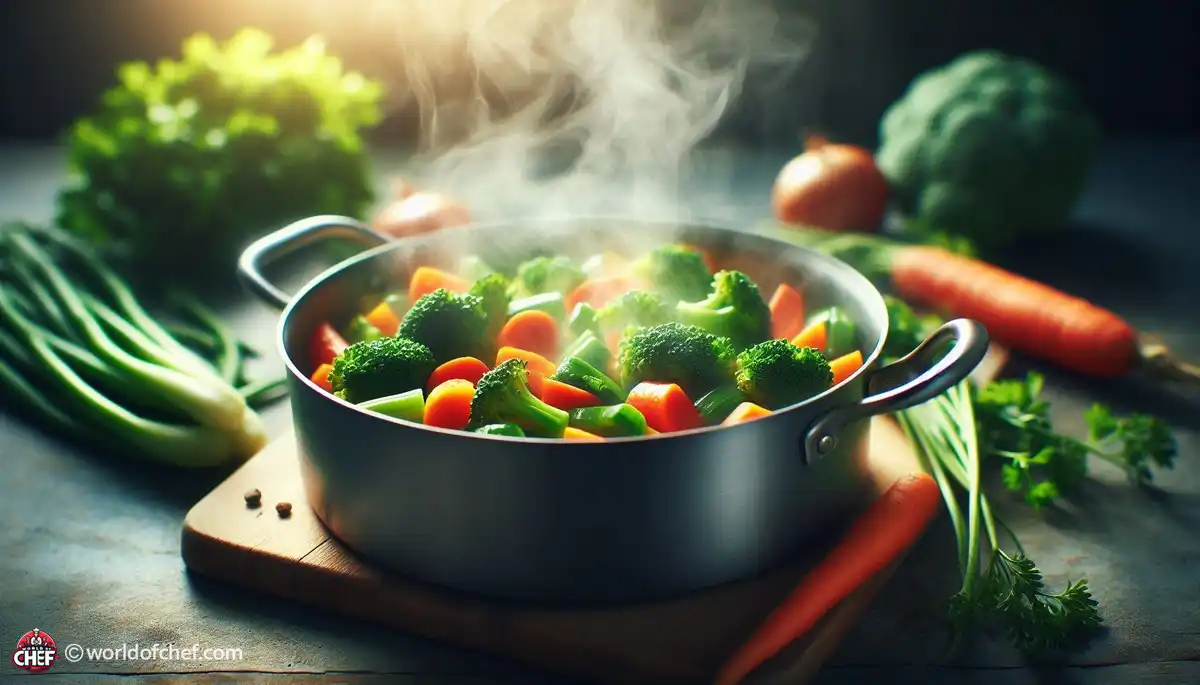
Simmering with Spices: Infusing Flavor into Your Dishes
Emery Donley - Oct 8, 2024 - 8 min read


The skill of simmering is an introduction to cookery where the individual will get his or her vegetables well-cooked, but softly. Skill in boiling is characterized with a rapid rising of the water, and there happens quick foaming; thus the case is associated with danger to be over-cooked and flavor going down. Simmering instead calls for boiling vegetables at lower temperature than boiling in water or other liquids. This way, the flavors blend together without losing the integrity of the vegetables. A good simmering technique could make your dishes go from ordinary to extraordinary, hence worth mastering.
First and foremost, before commencing with the simmering, you need to start with fresh, high-quality vegetables. Choose vegetables that have good colors, firm textures, and a fragrant smell. Seasonal vegetables, where possible, will prove to be not only fresher but also likely to provide a more intense flavor. Beyond this, however, be aware of the individual characteristics of the vegetables you'll be using and how their flavors will blend into each other in the finished dish. Whether you are braising a medley of root vegetables or a combination of Leafy Greens, judicious ingredient selection will play to the best possible effect when it comes to maximum flavor.
Preparing the vegetables in good time ensures that they all cook uniformly and absorb flavors effectively. First, wash them as clean as possible to ensure removal of dirt or any debris attached to the vegetable. Peeling, trimming, and chopping depend on the nature of the vegetable; thus, chop or slice all the vegetables in equal proportions to enhance proper cooking. Pay attention to the size and shape of your cuts, as smaller pieces will cook more quickly than larger ones. You may also want to blanch denser vegetables like carrots or potatoes before simmering to soften them slightly and reduce cooking time.
The liquid you use for simmering can significantly impact the flavor of your vegetables. Where water is sufficient, it still often lacks flavor and, in many cases, dilutes some of the natural taste and flavors of the vegetables involved. Consider broth or stock, wine, and even coconut milk for adding more depth and complexity to your dish. Play around with those liquids and see what will help raise your specific flavor profile. Add just enough liquid not too much that the vegetables are soaked in water.
The other secret to a successful simmer would be regulation of temperature. Unlike boiling, where food has to be cooked quite fast, simmering relies on gentle heat, which coaxes flavors slowly. To get it to a simmer, place the liquid on medium-high to bring it to a soft boil and then turn it down to low to let it simmer steadily. Avoid letting the liquid reach full boil, as this might make the vegetables mushy and lose their texture, though small bubbles must appear at the surface of the liquid, and there must be a gentle rolling in the pot.
Simmer is an excellent time to spice your vegetables. This way you capitalize on adding herbs, spices, aromatics and other seasonings or to your taste mix and matching some like thyme, garlic, or maybe very spicy like ginger and lemongrass. Don't get carried away as sometimes vegetables can be over-salted and their natural flavour suppressed. Check the simmering liquid for seasoning periodically and adjust as needed for the perfect flavor balance.
The largest mistake for simmered vegetables is overcooking, until mushy, which contributes to a loss of flavor as well. Therefore, keep an eye on the timing and check often for doneness. Start checking the doneness a few minutes before the recommended cooking time if you are working with tender vegetables like spinach or zucchini. The point is to cook the vegetables until they are tender but still slightly firm to the touch, something known in culinary terms as "al dente".
If you stew different vegetables with varying times required for cooking, they will best be added into the pot in stages where everything cooks uniformly. In general, you start out by using the vegetables requiring a longer time to stew before adding quicker-cooking ones such as peas and broccoli during the final phases of stewing. This will make sure that some of your vegetables do not end up overdone while others may still be underdone and thus leave your dish to achieve the right flavor and also texture.
After making sure all your vegetables turn out right to your desired taste, do not forget to add finishing touches on the dish to push it to the fullest. Think of adding some high-quality olive oil drops drizzled on top, squeezing in some fresh lemon juice, or sprinkling the Parmesan cheese with freshly grated it for depth and richness. Fresh herbs, whether it's parsley, basil, or cilantro, are a pop of color in the finished dish with lots of flavor added into the mix. Take a minute, taste and adjust seasoning to your preference, and be free when garnishing it.

Emery Donley - Oct 8, 2024 - 8 min read

Russell Comeaux - Oct 8, 2024 - 8 min read

Walter Backus - Oct 7, 2024 - 8 min read

Samantha Thames - Oct 7, 2024 - 6 min read